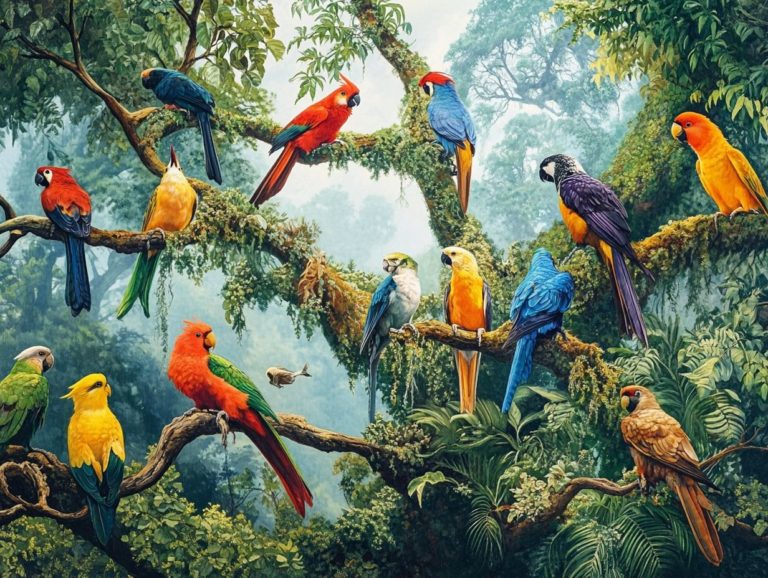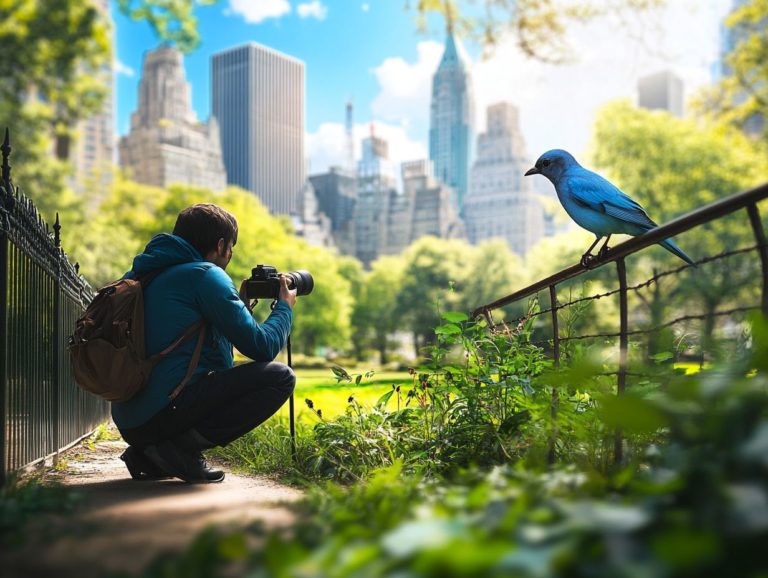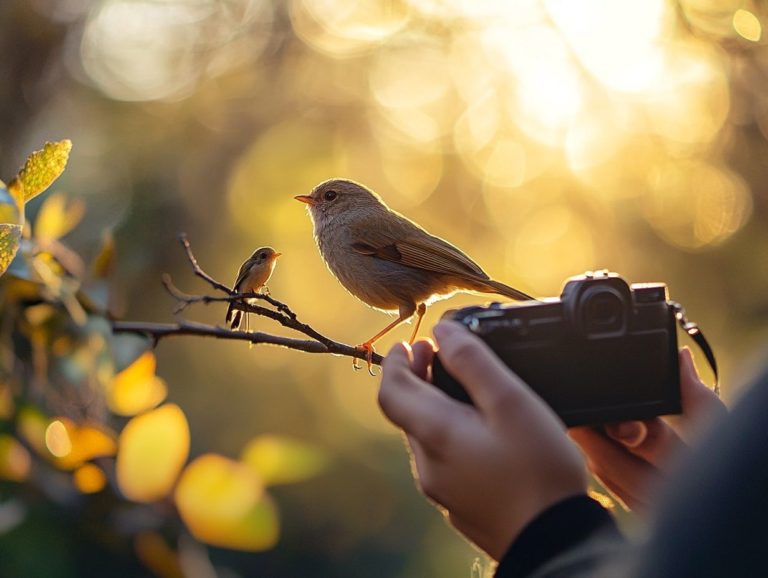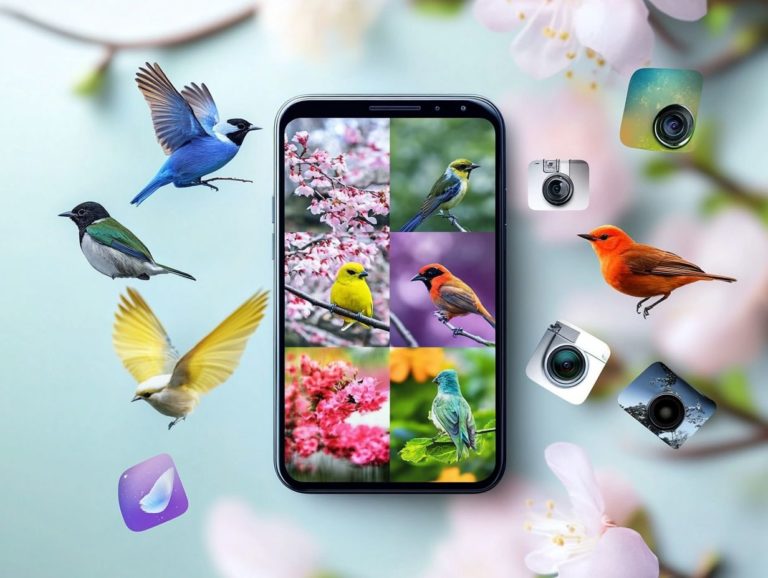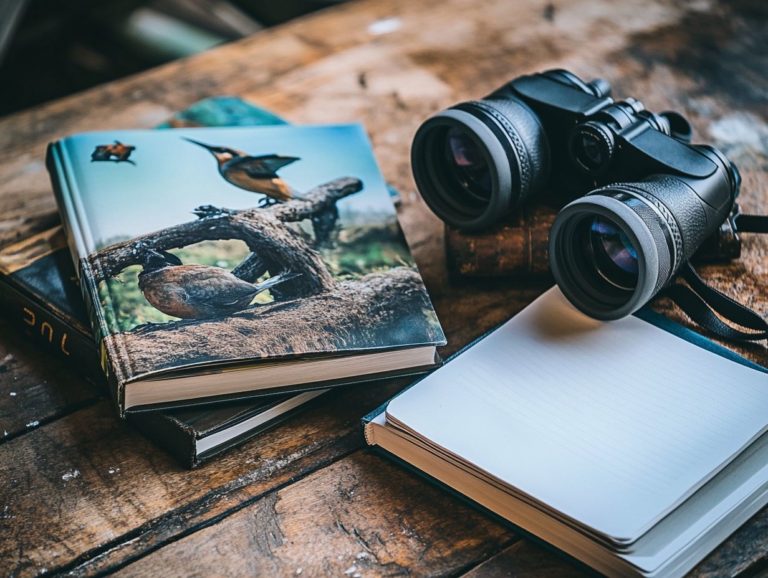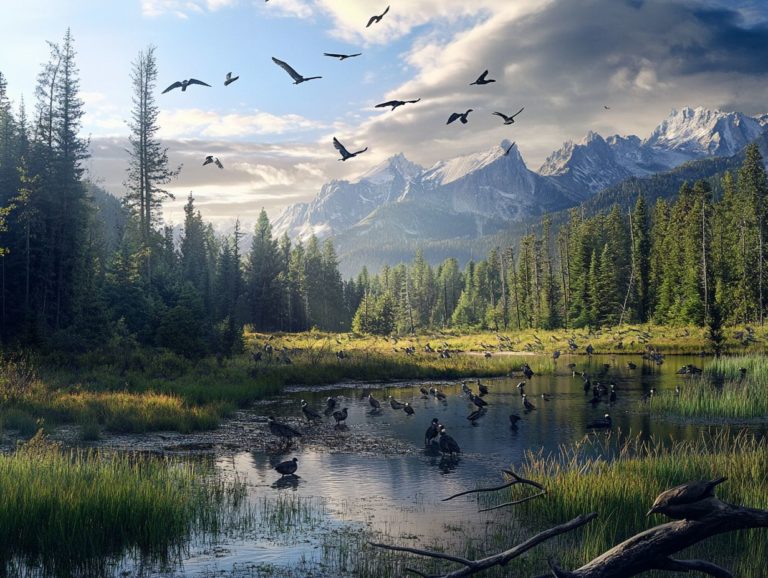Best Practices for Bird Photography Ethics
Bird photography goes beyond just taking pictures; it invites you to appreciate the intricate balance between artistry and the well-being of our avian companions.
This article explores the significance of ethics in bird photography and how your actions can impact both the birds and their habitats. Discover the importance of responsible behavior in the field, the right equipment to choose, and techniques that honor avian boundaries.
Learn to share and edit your photos honestly, making a positive impact in the birding community.
Join us as you delve into the realm of ethical bird photography, ensuring that your passion not only celebrates but also safeguards the subjects you cherish.
Contents
- Key Takeaways:
- The Importance of Ethics in Bird Photography
- Responsible Behavior in the Field
- Choosing the Right Equipment for Ethical Bird Photography
- Techniques for Ethical Bird Photography
- Editing and Sharing Ethical Bird Photos
- Advocating for Ethical Bird Photography
- Frequently Asked Questions
- What are the best practices for bird photography ethics?
- Why is it important to respect the birds and their habitat?
- What can I do to avoid disturbing or harming the birds while taking photos?
- Do I need any permits for bird photography?
- Are there any specific guidelines for bird photography ethics in my state?
- What should I do if I see other photographers not following bird photography guidelines?
Key Takeaways:
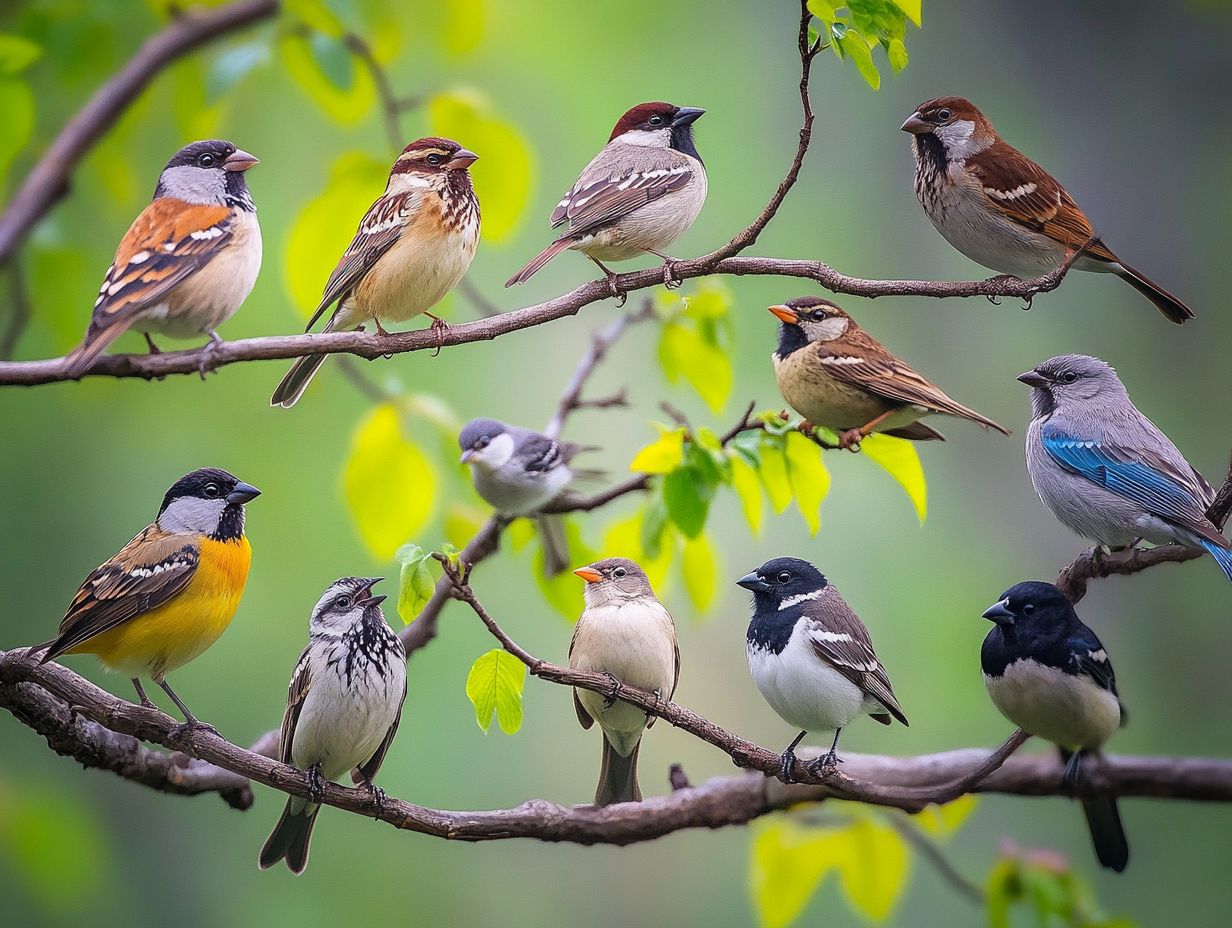
- Always prioritize the well-being of birds and their habitats when engaging in bird photography. Understand the impact of your actions and minimize disturbance to birds.
- Choose equipment and techniques that allow you to capture high-quality photos while respecting the boundaries and behaviors of birds. Edit and share photos with honesty and accuracy to promote ethical practices in the birding community.
- Be a responsible advocate for ethical bird photography by promoting and practicing ethical behaviors in the field. Educate others on the importance of ethics and the consequences of their actions on birds and their habitats.
The Importance of Ethics in Bird Photography
Bird photography holds significant importance in wildlife conservation. It compels you to adhere to ethical guidelines that prioritize the welfare of birds and their habitats. For those looking to enhance their skills, field notes on making the most of bird photography can provide valuable insights. This responsibility requires an understanding of how your actions affect nesting birds and their environment, fostering a sense of accountability within the birding community.
Organizations like the Audubon Society champion these ethical standards, emphasizing responsible birding practices that respect birds’ natural behavior while safeguarding their habitats. To deepen your understanding, consider what you should know about bird watching ethics. By integrating these ethical considerations into your bird photography, you contribute to wildlife conservation and promote a sustainable approach to capturing nature’s beauty.
Understanding the Impact on Birds and their Habitats
Recognizing the impact of human activities and environmental factors on birds and their habitats is crucial for cultivating responsible birding practices and ensuring wildlife welfare.
Understanding how activities like urban development, pollution, and recreation can disrupt nesting birds and their environments allows you to become a passionate advocate for conservation. It s crucial to recognize that disturbances can severely harm these habitats, affecting the availability of food and shelter and influencing bird behavior and breeding success.
By observing wildlife from a respectful distance, you help minimize stress on these creatures, allowing them to thrive in their natural surroundings. Raising awareness about these issues helps create a healthier ecosystem, benefiting both avian species and the environment.
Responsible Behavior in the Field
Practicing responsible behavior in the field is essential for bird watchers and photographers alike. It minimizes disturbance and supports wildlife welfare, while also enhancing your experience. To learn more about this, check out how to get started with bird photography.
Keep a respectful distance, note any signs of stress in the birds, and employ quiet observation techniques. This way, you can immerse yourself in nature photography without disrupting the natural behaviors of your feathered subjects.
Familiarize yourself with local laws and conservation policies, and recognize the importance of habitat protection. This mindfulness helps ensure you leave no trace behind, preserving the delicate balance of ecosystems for future generations to appreciate.
Start your ethical bird photography journey today, and protect our beautiful avian friends!
Minimizing Disturbance and Harm to Birds
Minimizing disturbance and harm to birds is crucial for anyone engaged in ethical bird photography and wildlife observation, especially when considering the basics of bird photography composition.
Understanding how to maintain a respectful distance while observing these magnificent creatures is essential for their welfare. Always place the well-being of the birds above the desire for that perfect shot. Keep a safe distance and take time to observe their natural behaviors from afar. This allows them to carry on with their daily routines without disruption.
Embrace group birding practices that prioritize quietness and limited movement. This can greatly reduce stress on local wildlife. By being mindful of noise levels and minimizing sudden movements, you can enjoy birding without harming these vulnerable species.
Choosing the Right Equipment for Ethical Bird Photography
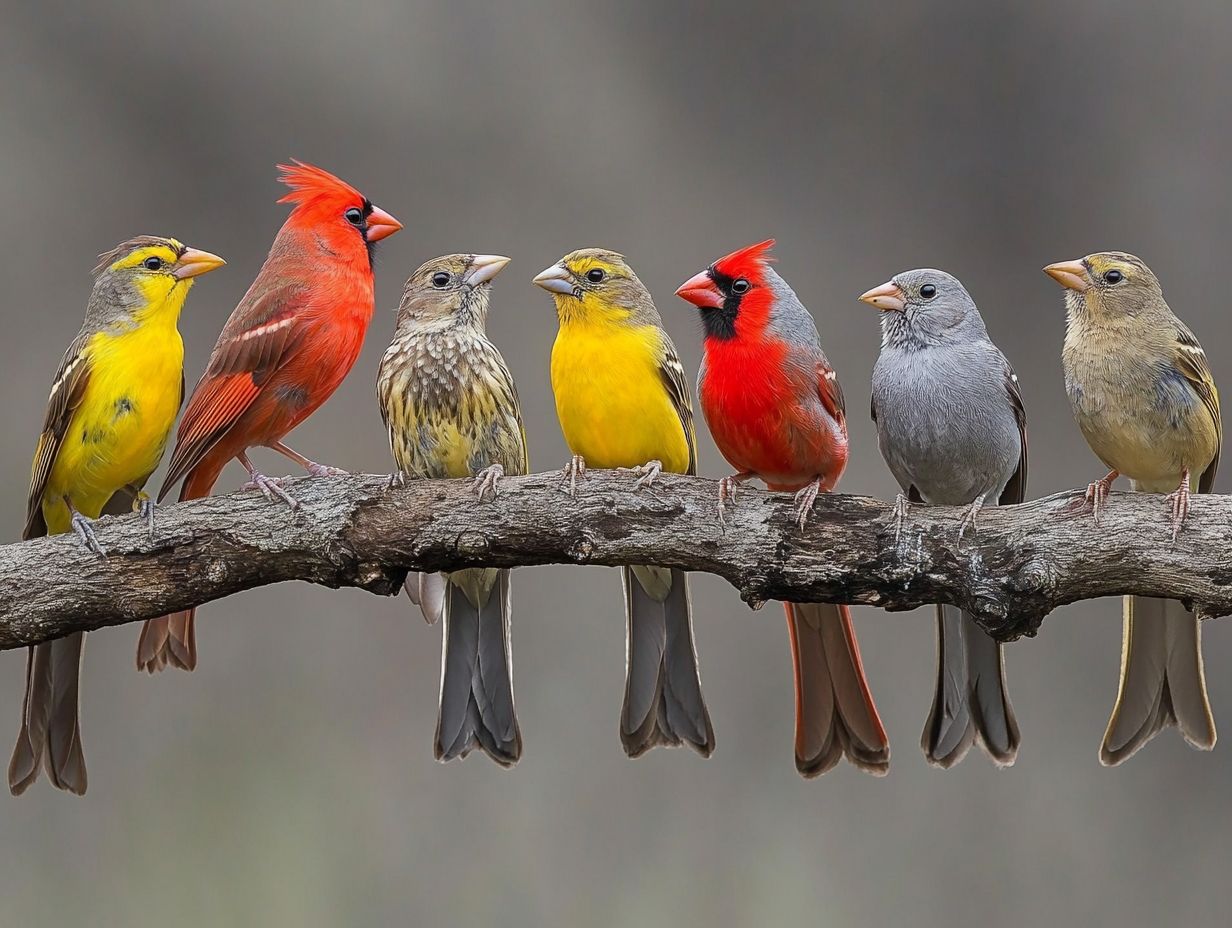
Selecting the right equipment, such as a telephoto lens, is key for ethical bird photography. For guidance on this, you can refer to how to safely photograph birds in the wild, which allows you to capture breathtaking images while respecting the space of your subjects.
Using a telephoto lens enables you to photograph birds without disturbing their natural behaviors, greatly minimizing stress on wildlife. Fine-tune your camera settings to elevate the quality of your images from a distance. Showcase the exquisite beauty of birds without jeopardizing their well-being.
Stay mindful of the environmental impact your gear may have on bird habitats. This helps ensure a harmonious relationship between your passion and the preservation of nature, while also considering wildlife rehab.
Considerations for Camera and Lens Selection
When selecting a camera and lens for wildlife photography, especially for capturing rare birds, keep several important factors in mind to ensure ethical practices.
- Opt for a camera with fast autofocus to capture fleeting moments without disturbing your subjects.
- A telephoto lens, ideally with a focal length of 300mm or more, allows you to shoot from a safe distance.
- Investing in high-quality glass can produce sharper images, preserving the integrity of the scene.
- Understanding aperture settings is essential; a wide aperture creates beautiful bokeh, which enhances your subjects without distraction.
These thoughtful gear choices not only elevate your photographs but also show your commitment to wildlife welfare.
Techniques for Ethical Bird Photography
Using ethical bird photography techniques is essential for maintaining the integrity of wildlife and respecting their natural habitats. For those looking to improve their skills, following the best practices for editing bird photos not only enhances your craft but also contributes to preserving the delicate balance within ecosystems.
Respecting Boundaries and Behaviors
Respecting the boundaries and behaviors of birds is vital for anyone committed to ethical bird photography and wildlife observation. To enhance your skills, consider exploring tips for photographing rare bird species.
Understanding avian behavior and recognizing stress signals can deepen your appreciation of these magnificent creatures in their natural habitat. Maintain a respectful distance, giving birds the space they need to thrive without unnecessary disturbance. Responsible wildlife observation fosters a greater connection with nature and aligns with ethical standards that prioritize the well-being of all creatures.
By being mindful of your presence, you promote a harmonious interaction that benefits both you and the birds, allowing these beautiful animals to display their natural behaviors freely.
Editing and Sharing Ethical Bird Photos
Editing and sharing ethical bird photos promotes responsible birding practices and raises awareness of wildlife conservation. Showcasing these images fosters a deeper understanding of the importance of protecting avian species and their habitats.
Your efforts can inspire others to appreciate the beauty of nature while encouraging sustainable practices that benefit both birds and their environments. Share your experiences or photos to engage others in this vital mission!
Ensuring Accuracy and Honesty in Captions and Descriptions
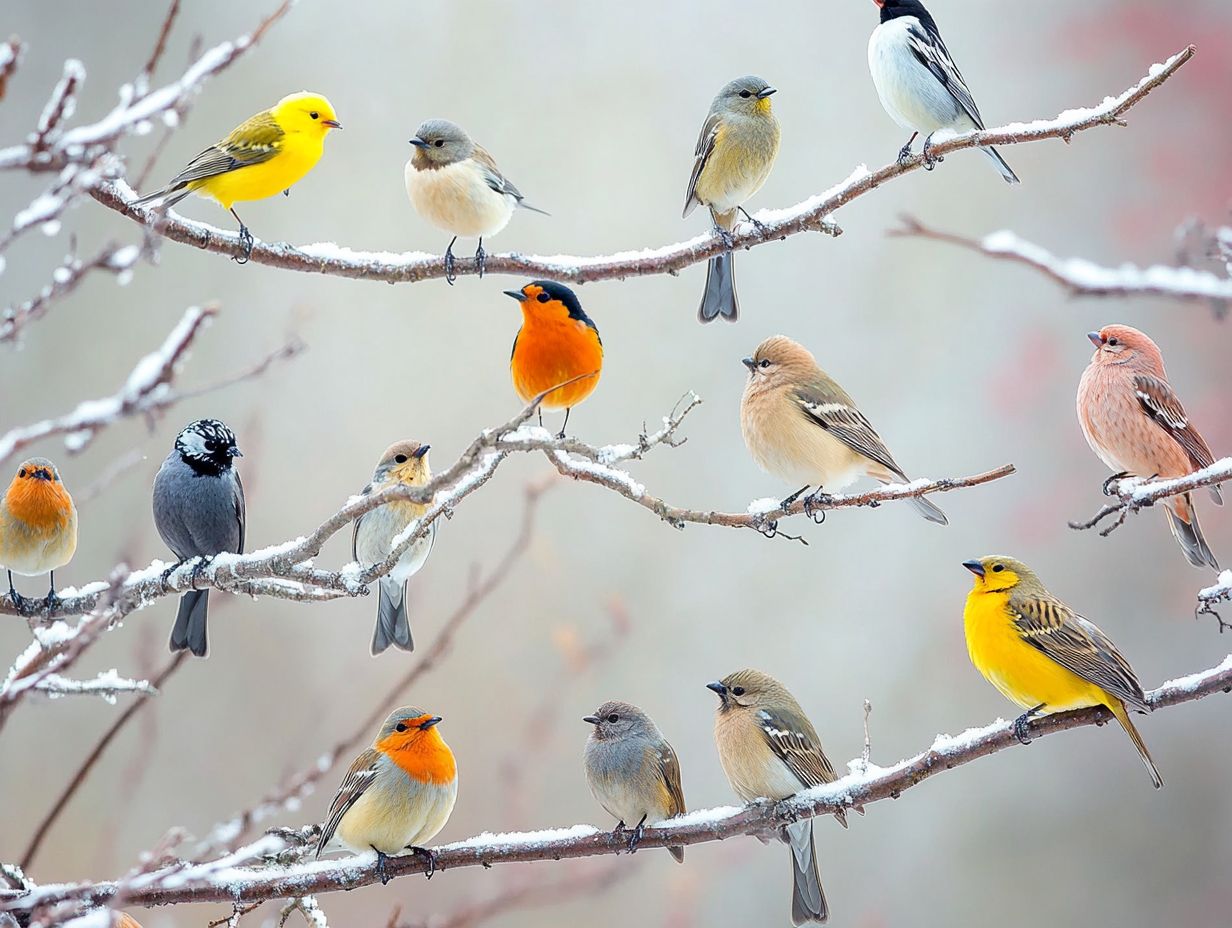
Ensuring accuracy and honesty in your captions and descriptions is essential for maintaining integrity in wildlife photography.
When you provide clear and truthful context, you help people understand better the subjects captured in your images. This commitment honors the animals depicted and upholds the ethical standards within the photography community.
Misrepresentation can lead to misconceptions about wildlife behaviors and habitats, impacting conservation efforts. By being transparent in your storytelling, you build trust with your viewers, creating an ethical framework that values honesty and respects the natural world.
Adopting such practices is crucial for responsible wildlife representation and cultivating a more informed public.
Advocating for Ethical Bird Photography
Passionate advocacy for ethical bird photography transforms our community! By championing these principles, you contribute to a more respectful and sustainable approach that benefits both the birds and those who admire them.
Promoting Ethical Practices in the Birding Community
Promoting ethical practices within the birding community is essential for raising awareness and ensuring adherence to conservation policies.
Various groups that support and promote causes play a pivotal role in educating you and your fellow birders about responsible techniques that minimize disturbances to wildlife and their habitats.
Through workshops, educational resources, and community outreach, these groups emphasize the collective responsibility every birder has in protecting avian species and nurturing a culture of sustainability.
Encouraging collaboration among enthusiasts empowers the community to advocate effectively for robust conservation policies. By engaging in initiatives designed to safeguard critical habitats and support ongoing research, you enrich your own birding experience while positively contributing to the ecosystem.
Frequently Asked Questions
What are the best practices for bird photography ethics?
The best practices for bird photography ethics include respecting the birds and their habitat, avoiding disturbances or harm, obtaining proper permits when necessary, and adhering to local or state regulations. For more insights, consider exploring wildlife photography ethics.
Why is it important to respect the birds and their habitat?
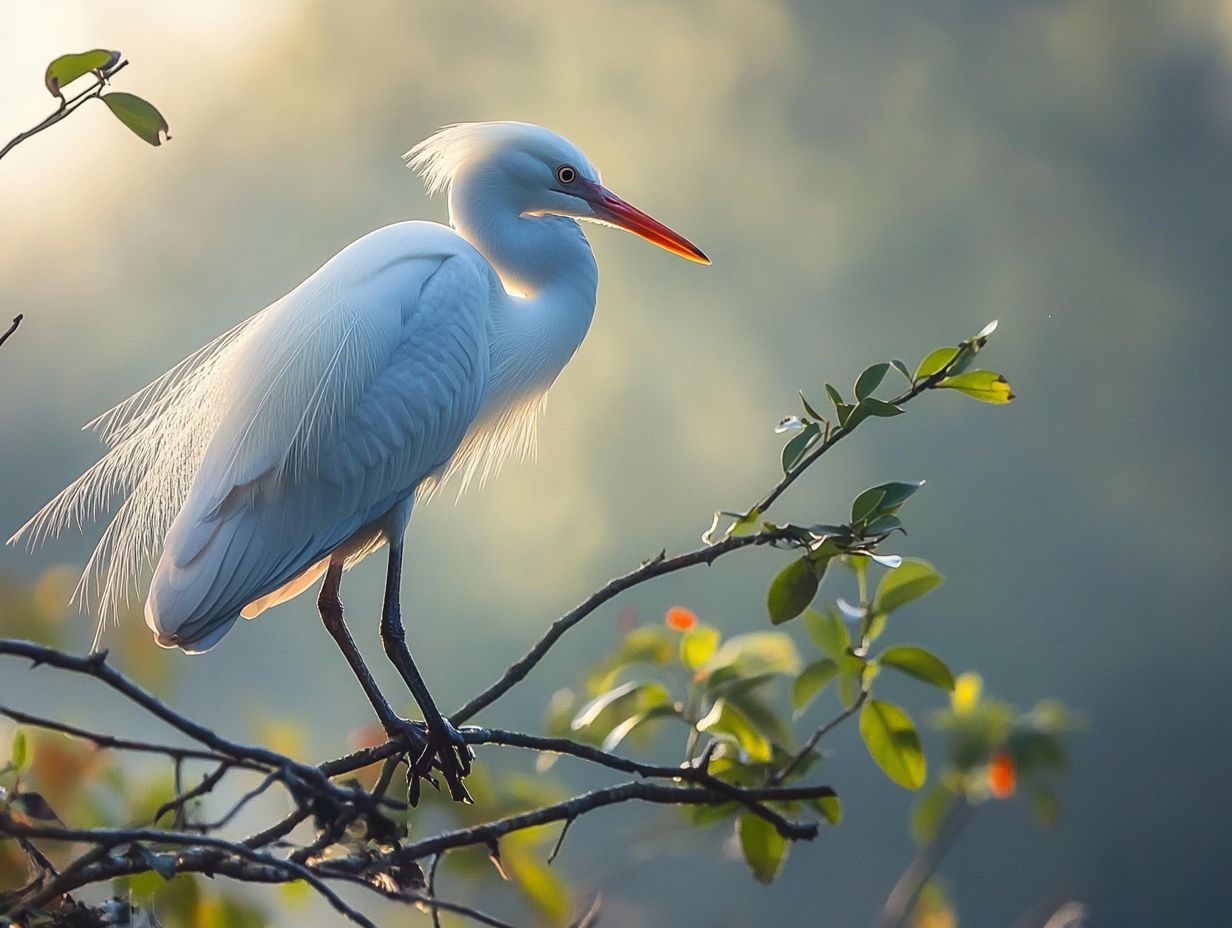
Why is respecting birds and their habitat so important? It lets them live naturally and keeps our ecosystem balanced.
What can I do to avoid disturbing or harming the birds while taking photos?
To avoid disturbing or harming the birds, always maintain a safe and respectful distance. Use a telephoto lens instead of getting too close, and avoid loud noises or sudden movements that might startle them.
If the birds show any signs of distress, it’s best to move away and find another subject to photograph.
Do I need any permits for bird photography?
It depends on the location and the specific species of birds you are photographing. It’s always a good idea to check with local authorities or park rangers to see if any permits are needed.
Some protected bird species may also require special permits for photography, so researching beforehand is essential.
Are there any specific guidelines for bird photography ethics in my state?
Yes, some states may have specific regulations or guidelines for bird photography, especially in protected areas or during nesting seasons. Familiarizing yourself with these guidelines is crucial to ensure the well-being of the birds and the preservation of their habitat.
What should I do if I see other photographers not following bird photography guidelines?
If you see other photographers ignoring bird photography guidelines, it s time to take action! Speak up and help them understand the importance of following these rules.
If you encounter harmful or illegal behavior, report it to the appropriate authorities. Together, we can protect our feathered friends and their habitats.

